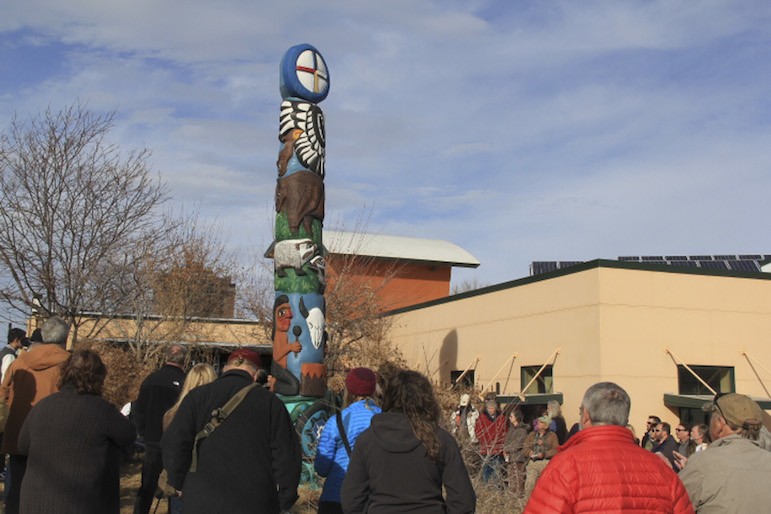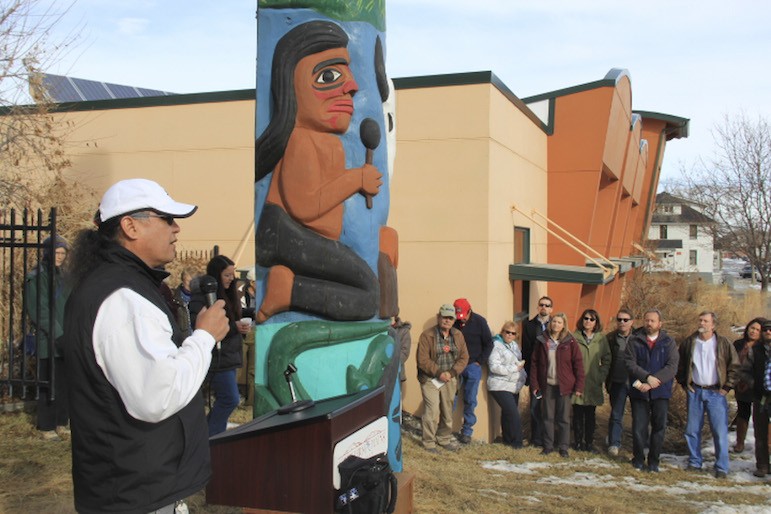A totem pole that is a symbol of two Indian tribes’ opposition to increased coal mining and exportation has a temporary home in Billings.
The 22-foot-tall western red cedar totem pole, created by the Lummi Nation as a gift to the Northern Cheyenne, was dedicated Friday outside Home on the Range, which houses the Northern Plains Resource Council and the Western Organization of Resource Councils of which it is part.
The work of art, adorned with Cheyenne symbols, was delivered to the Northern Cheyenne Indian Reservation in late August and will return there after a permanent home is found for it. In the meantime it towers over Home on the Range, 220 S. 27th St.
It is meant to symbolize the solidarity of the Cheyenne, many of whom oppose coal projects like the proposed Tongue River Railroad, and the Lummi, who are fighting plans to build a coal-export terminal near their home in northwest Washington.
Jeanie Alderson, a rancher near Birney and a second-generation member of the NPRC, predicted that opponents of coal expansion will eventually prevail, noting that four years ago six Northwest coal terminals were on the drawing board, and now there are only two.
She said the Northern Cheyenne and the NPRC are natural allies of the Lummi.“They have a big fight and we are with them,” she said. “Our fights are now linked.”
Otto Braided Hair, Northern Cheyenne steward of the totem pole, and Alaina Buffalo Spirit, a Northern Cheyenne artist, heralded the partnership between the tribes and the NPRC, and thanked the Billings-based organization for temporarily taking the totem pole into its care.
Buffalo Spirit also read a statement from the Lummi, explaining the creation of the totem pole and the meaning of its many symbols, including a medicine wheel, an eagle holding a rabbit, sacred drummers, a bison, badgers, lizards and a turtle.
Marci McLean, a Blackfeet Indian and director of Western Native Voice, said the badger is of great importance to the Blackfeet, particularly now, given the tribe’s opposition to plans to drill for oil in the Badger-Two Medicine region just outside the Blackfeet Indian Reservation.
“What can we do beyond protecting the land, the water and the air?” McLean asked.







